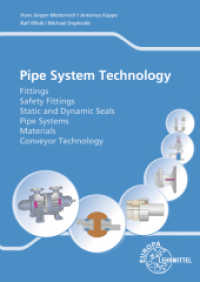Full Description
This book is evidence-based and takes into account the modern managed care model in which the current hospitalist practices. The Hospitalist Physician is a relatively new concept within modern healthcare. As this new field evolves, so too will the educational needs of internists who have chosen to practice this discipline. This work is aimed squarely at addressing this need. Internal medicine residency programs in this country strive to equip new grads with a comprehensive set of skills for dealing with both inpatient and outpatient care. However, there remain practice management and workflow nuances that separate the traditional internist from the acute inpatient care physician, or hospitalist. These are the key areas that this work hopes to shed light upon, in addition to highlighting some of the intriguing procedural and critical care elements that hospitalist need to be strong in. It is hoped that this text will enable a physician to respond to the patients' needs in real time, providing a service which was not possible for busy primary care doctors to perform in the recent past. This book will be used as an 'in-the-field' guide for new hospitalists, focusing on two groups of readers: the new graduate from residency and the office-based internist that wishes to retrain and certify as a hospitalist physician. It is a practical text, with an illustrated procedures section, intended for use as a reference for hospital-based procedures. The Hospitalist will serve as a pocket guide for those intending to obtain rapid information on practice management principles unique to a hospitalist physician.
Contents
Overview Chapter OneAn introduction to this field, and what the future holds. Chapter Two: Code of EthicsCommon ethical issues encountered in a hospital setting, e.g.: withdrawal of life support. Chapter Three: Your First DayGuides you on how to plan your first day, through dictation of a History and Physical and a discharge summary. Chapter Four: Coding and BillingVery important topic for today's hospitalist. It guides the physician through various billing codes for the type of admission, follow-up and discharge. It also discusses the procedural codes for common procedures like a central venous catheter placement. Chapter Five: Medical RoundsThis is where this book comes in handy. It provides a quick reference format which enables a hospitalist to admit and treat a patient effectively. Chapter Six: ICU RoundsThis chapter discusses the ventilator management, various life saving medications and their dosages, sedation for patients on the ventilator and most common ICU admissions. Chapter Seven: Procedures (See Attached Sample Chapter)Chapter Eight: Pre-Operative EvaluationFlow charts for pre-operative evaluation. Chapter Nine: Tips to Avoid BurnoutThis chapter brings humanity to the book and addresses a very important issue for the current hospitalist, i.e. burnout. This section provides tips and suggestions on how to prevent burnout in the intense world of Hospital Medicine. Chapter Ten: Risk Management for HospitalistsAppendices: Appendix A: Hospitalist Core Competencies








